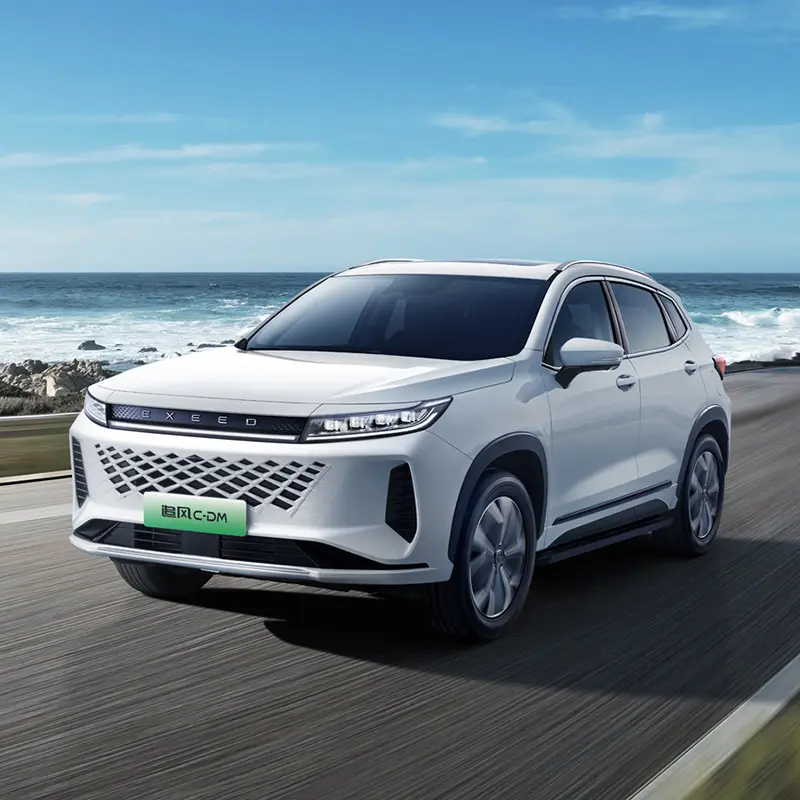Types of Passenger Vehicles
2024-05-23
Passenger vehicles are a broad category of motor vehicles designed primarily for the transportation of people rather than goods. They encompass a variety of types, each with specific features tailored to different needs and preferences. Here's a comprehensive overview of passenger vehicles:
Types of Passenger Vehicles
1. Sedans:
- Description: Typically a four-door vehicle with a separate trunk.
- Features: Comfortable seating for 4-5 passengers, good fuel efficiency, and ample trunk space.
- Examples: Toyota Camry, Honda Accord, BMW 3 Series.
2. Hatchbacks:
- Description: A compact or subcompact car with a rear door that swings upward.
- Features: Flexible cargo space, often more affordable, good fuel economy.
- Examples: Volkswagen Golf, Ford Focus, Honda Fit.
3. SUVs (Sport Utility Vehicles):
- Description: Larger vehicles that can handle a variety of terrains with higher ground clearance.
- Features: Spacious interiors, available in two-wheel and four-wheel drive, higher seating position.
- Examples: Toyota RAV4, Ford Explorer, Honda CR-V.
4. Crossovers:
- Description: A mix between an SUV and a sedan, built on a unibody car platform.
- Features: Car-like handling, good fuel efficiency, and versatile interiors.
- Examples: Subaru Outback, Mazda CX-5, Nissan Rogue.
5. Coupes:
- Description: Two-door vehicles often designed for sporty performance.
- Features: Sleek design, usually seats 2-4 passengers, often more powerful engines.
- Examples: Ford Mustang, Chevrolet Camaro, Audi A5.
6. Convertibles:
- Description: Vehicles with a retractable roof.
- Features: Open-air driving experience, often sporty, available in two or four-seater configurations.
- Examples: Mazda MX-5 Miata, BMW Z4, Ford Mustang Convertible.
7. Minivans:
- Description: Family-oriented vehicles with sliding side doors.
- Features: Spacious interiors, can seat up to 7-8 passengers, numerous storage compartments.
- Examples: Honda Odyssey, Toyota Sienna, Chrysler Pacifica.
8. Pickup Trucks:
- Description: Vehicles with an open cargo area (bed) at the back.
- Features: Versatile for carrying both passengers and cargo, available in various sizes (compact to full-size).
- Examples: Ford F-150, Chevrolet Silverado, Ram 1500.
9. Station Wagons:
- Description: Similar to sedans but with an extended rear cargo area.
- Features: Ample cargo space, often more fuel-efficient than SUVs.
- Examples: Subaru Outback, Volvo V60, Audi A4 Allroad.
Key Features to Consider
1. Fuel Efficiency: Important for reducing fuel costs and environmental impact. Look for vehicles with good miles per gallon (MPG) ratings.
2. Safety: Features such as airbags, anti-lock brakes, stability control, and advanced driver assistance systems (ADAS) like lane-keeping assist, adaptive cruise control, and automatic emergency braking.
3. Comfort: Seating capacity, legroom, headroom, and overall comfort for long journeys.
4. Technology: Infotainment systems, connectivity options (Bluetooth, USB, Apple CarPlay, Android Auto), navigation systems, and advanced driver assistance features.
5. Performance: Engine power, handling, and ride quality. Consider factors like horsepower, torque, and drivetrain (FWD, RWD, AWD, 4WD).
6. Reliability and Maintenance: Brand reputation for reliability, warranty coverage, and maintenance costs.
7. Cost: Initial purchase price, financing options, insurance costs, and total cost of ownership.
Emerging Trends
1. Electric Vehicles (EVs):
- Description: Vehicles powered entirely by electric batteries.
- Features: Zero emissions, quiet operation, often high-tech features, and lower running costs.
- Examples: Tesla Model 3, Nissan Leaf, Chevrolet Bolt.
2. Hybrid and Plug-in Hybrid Vehicles (PHEVs):
- Description: Vehicles that combine a traditional internal combustion engine with an electric motor.
- Features: Improved fuel efficiency, lower emissions, some can drive on electric power alone for short distances.
- Examples: Toyota Prius, Ford Escape Hybrid, Honda Clarity Plug-in Hybrid.
3. Autonomous Vehicles:
- Description: Self-driving cars that use sensors, cameras, and artificial intelligence to navigate.
- Features: Enhanced safety features, convenience, and potential for reducing traffic accidents.
- Examples: Currently in development and testing by companies like Tesla, Waymo, and Uber.
Passenger vehicles offer a range of options to meet various needs, from daily commuting and family transportation to off-road adventures and high-performance driving. When choosing a vehicle, it's important to consider your specific requirements and preferences, as well as emerging trends in automotive technology.



